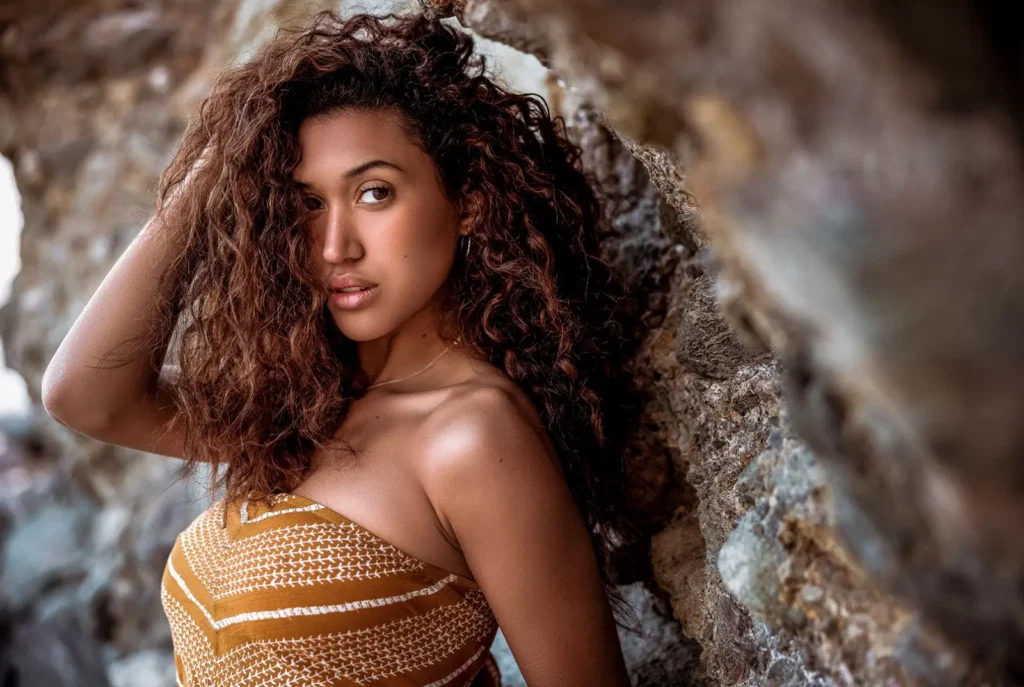Understanding Depth of Field in Portrait Photography
Depth of field is a fundamental concept in photography that profoundly influences the visual impact and storytelling of portraits. Whether you’re aiming to isolate your subject against a blurred background or capture sharp details throughout the frame, mastering depth of field allows photographers to create compelling and aesthetically pleasing portraits. In this guide, we delve into the intricacies of depth of field in portrait photography, exploring its definition, factors influencing it, and techniques to manipulate it effectively.

What is Depth of Field?
Depth of field refers to the zone of acceptable sharpness within a photograph, extending from the nearest to the farthest point in focus. In portrait photography, depth of field determines how much of the scene appears sharp versus blurred, influencing the viewer’s attention and emphasizing specific elements of the image.
Factors Influencing Depth of Field
**1. ** Aperture (f-stop): Aperture size directly affects depth of field. A wider aperture (smaller f-number, e.g., f/1.8) produces a shallow depth of field, resulting in a blurred background (bokeh) while keeping the subject sharp. In contrast, a narrower aperture (larger f-number, e.g., f/8 or higher) increases depth of field, keeping more of the scene in focus.
**2. ** Distance to Subject: The closer the subject is to the camera, the shallower the depth of field becomes at a given aperture. This proximity allows for selective focus on specific facial features or details while blurring out distractions in the background.
**3. ** Lens Focal Length: Longer focal lengths (e.g., 85mm, 100mm) tend to produce shallower depth of field compared to wider focal lengths (e.g., 35mm, 50mm) when using the same aperture. Telephoto lenses compress the background, enhancing bokeh and isolating the subject from distractions.
Techniques for Manipulating Depth of Field
**1. ** Portraits with Shallow Depth of Field: To create portraits with a blurred background and a sharp subject, use a wide aperture (e.g., f/1.4 to f/2.8). Position the subject at a distance from the background and focus precisely on the eyes or face to ensure critical areas are sharp.
**2. ** Environmental Portraits with Deep Depth of Field: For environmental portraits where context and surroundings are essential, choose a narrower aperture (e.g., f/8 to f/16). This setting ensures both the subject and background are in focus, capturing details and context without distractions.
**3. ** Hyperfocal Distance: Use hyperfocal distance techniques in landscape portraits to maximize depth of field from the nearest foreground to infinity. Adjust focus and aperture settings to maintain sharpness throughout the entire scene while highlighting distant elements.
Creative Considerations
**1. ** Bokeh and Background Blur: Experiment with different apertures and lens choices to control bokeh and background blur. Soft, creamy bokeh can enhance the visual separation between the subject and background, drawing attention to the subject’s expressions and emotions.
**2. ** Foreground and Background Elements: Consider how foreground and background elements contribute to storytelling in portraits. Manipulating depth of field allows you to emphasize or de-emphasize elements within the frame, guiding the viewer’s focus and enhancing visual hierarchy.
Practical Applications
**1. ** Studio vs. Outdoor Settings: In studio portraits, use controlled lighting and aperture settings to isolate subjects against neutral or complementary backgrounds. Outdoors, utilize natural light and wide apertures to create environmental portraits that integrate subjects with their surroundings.
**2. ** Lens Choice: Select lenses based on desired depth of field effects and shooting conditions. Prime lenses with wide apertures are popular for shallow depth of field portraits, while zoom lenses offer versatility for adjusting composition and depth of field on the go.
Conclusion
Mastering depth of field in portrait photography is essential for achieving creative control over focus, composition, and visual impact. By understanding the relationship between aperture, distance to subject, and lens focal length, photographers can effectively manipulate depth of field to convey mood, emphasize subjects, and create captivating portraits. Whether aiming for soft, dreamy backgrounds or crisp, detailed environmental portraits, depth of field techniques empower photographers to tell compelling stories through their images, leaving a lasting impression on viewers.


